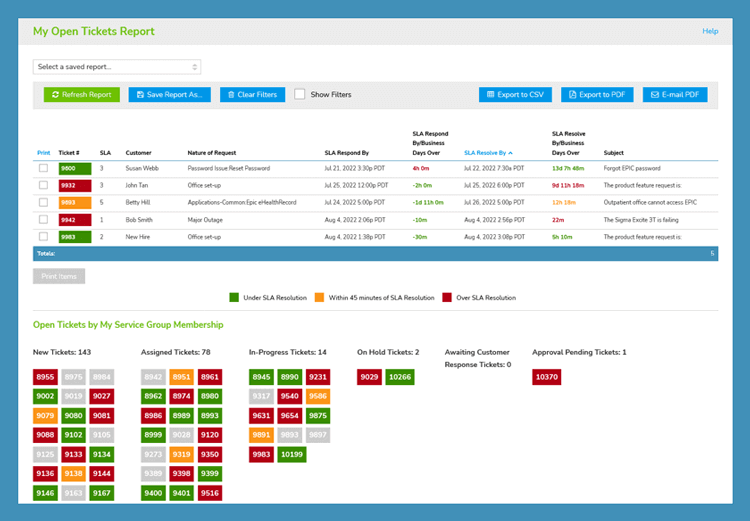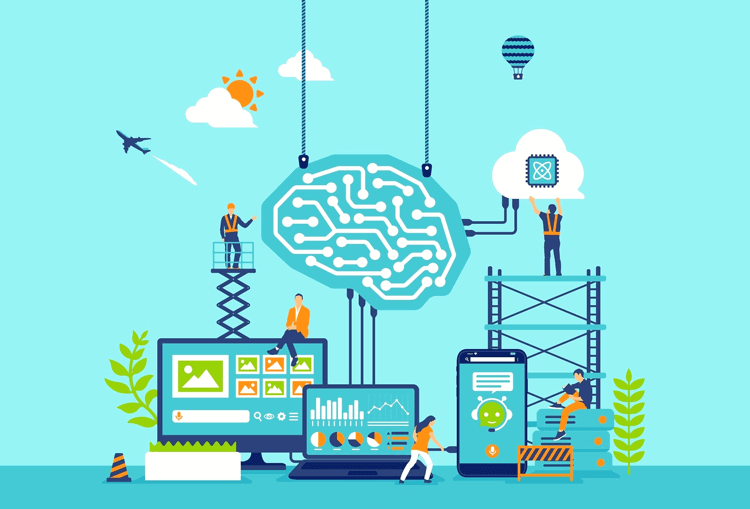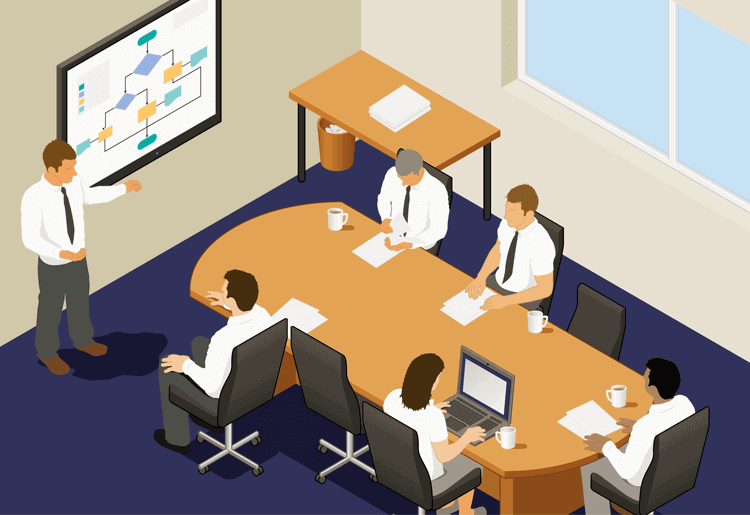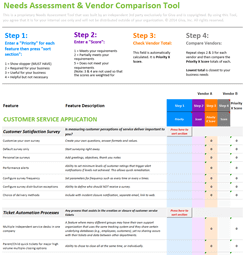Complete Guide to Information Technology (IT) Customer Service
While sometimes not considered so, Information Technology (IT) is very customer-oriented. One of the most important functions and measures of success is how customer service is delivered from IT departments.
IT in its myriad forms makes every business function. Without an IT team (in-house or outsourced) to support large companies, they would struggle to operate.
In this article, we will take a closer look at IT customer service, the challenges IT teams face, best practices, and how success in IT customer service is measured.
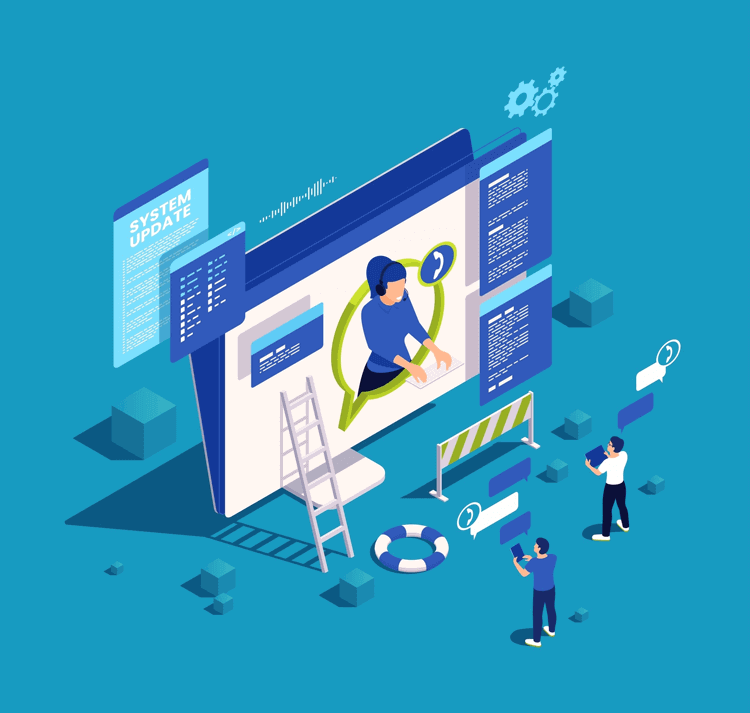
What is IT Customer Service?
Customer service in IT is the practice of delivering support and solutions to IT service "customers". These "customers" can be your company's employees if in-house, or other companies in total if you are an IT outsourced provider.
IT customer service is the intersection of service delivery and how that service is delivered. It is an operational function that makes sure that IT systems and software are working properly, and fixes any issues that impact productivity. Further, it can be measured in many ways, including how many tickets are resolved successfully and how quickly resolutions are achieved.
What Types of IT Services Do IT Teams Provide?
IT teams and providers bring a wide range of services designed to manage and support IT infrastructure and operations. Key services include:
- IT Help Desk (also known as a Service Desk) Support: Helping internal or external client team members with IT service technical issues, troubleshooting, and providing solutions. Support can be front-line (Tier 1), or more complex, such as Tier 2 or even Tier 3.
- Network Connectivity and Management: Monitoring and maintaining network performance and security. IT networks are crucial for the continuing productivity of any organization, so this usually includes automated monitoring and immediate troubleshooting.
- Cybersecurity Services: Protecting systems and data from cyber threats through proactive IT measures and incident response. In today's technological world, this is even more mission-critical. Most of this should be AI-based and automated, but if anything happens, IT teams and cybersecurity experts need to solve the problem ... fast!
- Managing Cloud Services (SaaS, IaaS, PaaS*): Managing cloud-based infrastructure, including storage, computing power, and applications (e.g., SaaS, IaaS, PaaS). Depending on the scale of your IT infrastructure, organizations might have a complex multi-layered cloud architecture. This could also include on-premises and hybrid servers. These can be ensured to keep working with the necessary redundancies and backups and vendor agreements in place. And they further help maintain Service Level Agreement (SLA) mandated uptime. * For reference, SaaS is software, IaaS is infrastructure, and PaaS is platform as a service.
- Software Maintenance: Ensuring that the current software the company uses is operational and that any issues are resolved as quickly as possible.
- Data Management: Maintaining the integrity, availability, and security of data through storage solutions and backup services.
- IT Consultancy: Providing strategic, business-centric advice on technology investments, implementation, and optimization. This is usually done in coordination with IT vendors, such as cloud and SaaS providers.
Watch Our Comprehensive Guide to IT Customer Service Video
Now, let's take a closer look at the top 3 customer service challenges in the IT industry and for IT teams.
3 Top Challenges for Customer Service in IT
-
Protecting Data Against Cyberattacks: Maintaining High Levels of Security
Security is a serious and constant concern in IT services. Businesses and organizations of every size face many cyber threats:
- Phishing scams
- AI-based deepfakes
- Malware
- Spyware
- Viruses
- Hackers
- Disgruntled employees and ex-employees
Protecting sensitive data and ensuring the integrity of IT systems against cyber threats is a continuous challenge. IT service providers must:
- Implement robust security measures
- Monitor the latest security protocols and patches
- Respond swiftly to any cybersecurity incidents
Balancing security with user convenience and operational efficiency is a delicate act that requires constant vigilance and expertise. Try and automate this as much as possible while working with cybersecurity experts as required.
-
Compliance in Higher-Regulation Sectors
Compliance with data protection and industry regulations is mission-critical. This is particularly important in the healthcare, finance, and government sectors.
IT service providers need to navigate complex regulatory environments. This is to ensure their services adhere to legal requirements such as GDPR, HIPAA, and others. It involves rigorous auditing, documentation, and implementation of compliance measures.
Going the extra mile in these can be resource-intensive and require specialized knowledge. Your team might need to work with a sector-specific specialist to make sure data compliance is aligned with regulations at all times.
-
Culture, Language, and Time Zone Issues when Outsourcing IT Services
IT outsourcing, with a help desk for instance, can lead to challenges related to cultural differences, language barriers, and time-zone differences. For example, the bulk of your team might be on the eastern seaboard of the US (EST) but your IT provider might be in India (9.5 hours difference).
In some cases, these issues can affect communication, collaboration, and delivering the level of IT customer service a client expects. Service providers need to establish clear communication channels, and ensure there are tools to make this easier, and any language barriers are overcome.
Further, providing a seamless customer experience means ensuring the "soft skills" are as good as the complex technical skills.
Following on from that, let's take a closer look at 5 best practices for customer service in IT.
5 Best Practices for Customer Service in IT
-
Provide Collaboration and Knowledge-Sharing Tools
Collaboration and knowledge-sharing are useful for resolving IT issues swiftly and efficiently. IT team members should be adept at sharing knowledge, such as through having an internal knowledge base.
Teams can collaborate while handling support tickets in real-time by developing or maintaining tools such as:
- A constantly updated knowledge base
- Internal wikis
- Collaborative chat apps (such as Slack)
Tools and platforms such as these reduce Average Handling Time (AHT), keep tickets within SLAs, and ensure that knowledge is not siloed within individual team members.
-
Set Clear KPIs Within a Service Level Agreement (SLA)
It's mission-critical in every IT team-client relationship that Key Performance Indicators (KPIs) within an SLA set the expectations for service delivery.
KPIs usually include response times (First Contact Resolution), resolution times (AHT), and customer satisfaction scores (CSAT and NPS, etc.). When you establish and monitor these metrics, IT service providers can meet their client's needs and identify areas for improvement. Regular review of SLAs and KPIs ensures alignment with evolving business objectives and customer expectations.
-
Ensure IT Customer Service is Scalable and Reliable
Scalability and reliability are necessary for maintaining high service levels and adhering to KPIs and SLAs. IT service providers should design their services to handle peak loads without performance and customer service suffering.
Reliability in IT service involves proactive monitoring and maintenance to prevent issues before they impact internal or external customers or stakeholders.
-
Provide Automation, AI Chatbots, and Self-Serve Tools
Automation and AI can significantly enhance the efficiency of IT teams. This is being proven given AI's integration into numerous tools and platforms.
AI chatbots combined with self-serve platforms can handle routine inquiries and provide instant support. This enables human agents to focus on more complex issues.
Self-service tools, such as a customer-centric troubleshooting knowledge base and FAQs, help customers to find answers themselves. Many people prefer taking this approach, only contacting a help desk when they can't find the answer. These solutions improve response times and customer satisfaction while reducing operational IT service costs.
-
Have Resilience and Redundancy Plans, Disaster Recovery, and Backups
Resilience and redundancy plans in IT are essential for maintaining service continuity in the face of disruptions.
IT service providers should have comprehensive disaster recovery plans, including regular backups and failover mechanisms established. This makes sure that services can be quickly restored in the event of hardware, database, server, network, or software failures, cyberattacks, or other disasters.
Regularly test and update these plans to make sure they work if every IT backup is needed.
Top 5 Ways Success is Measured in IT Customer Service
Here are 5 of the top measures of success in IT customer service:
- First Call (or Ticket) Resolution: FCR is one of the most important IT KPIs in the world of customer service operations. Whatever the issue, people want a problem resolved after the first time they contact support for help. No one wants to have to open another ticket. IT operations managers need to ensure the majority of support tickets are being resolved after the first point of contact.
- Average Handling Time (AHT): Even though most IT tickets are digital, there's still a "handling time" KPI that originates from telephony-based customer service centers. This is a way of measuring how long it takes for a ticket to be resolved once support has control of the issue.
- IT Service Availability: In most cases, IT teams and SaaS vendors aim for 99.999% service availability, also known as uptime. It's a KPI that is usually written in stone in SLAs. Every IT system that an organization relies on, especially communications and security, needs to be operational 24/7, except for occasional downtime when software or servers are being upgraded.
- Mean Time to Resolve (MTTR): Another key SLA-based metric is the time it takes for IT teams to resolve service tickets. This does include the time the customer used in creating the support request (unlike AHT). Integral to this is whether a ticket was resolved within SLA timescales or not.
- Net Promoter or Customer Satisfaction Scores (NPS/CSS): NPS or other customer satisfaction scores are a measurement of how happy customers are with IT support services. High scores show that the IT team is doing well. Lower scores show there is room for improvement, either with individual agents or the whole team.
Read more: What Are the Most Important Key Performance Indicators (KPIs) & Metrics for IT Operations Managers?
Now, let's look at 3 emerging trends in IT customer service.
3 Emerging Trends in IT Customer Service
-
AR/VR for Remote Support
Augmented Reality (AR) and Virtual Reality (VR) have the potential to transform remote IT support. With work-based AR/VR, IT teams could benefit from immersive, interactive experiences that enhance problem-solving capabilities.
- Enhanced Troubleshooting: IT teams could use AR to overlay digital instructions on physical devices. This could help guide users through complex repairs and configurations one step at a time. VR can simulate environments for training and troubleshooting, allowing technicians to practice in a risk-free, controlled setting.
- Remote Assistance: AR tools would mean that IT staff could see exactly what the user sees through smart glasses or mobile devices. This would mean more accurate diagnostics and quicker resolutions. It could also reduce the need for in-person visits, cutting costs and response times.
- Training and Collaboration: VR environments are useful for training new IT staff and enabling remote teams to collaborate in virtual spaces. This could encourage better team cohesion and knowledge transfer without the constraints of physical locations.
-
Impact of Generative AI on IT Customer Service
Generative AI, with its inclusion in hundreds of software tools and platforms IT teams use, is having a profound impact on IT customer service.
- Enhanced Support Automation: Generative AI can power AI chatbots and virtual assistants that handle complex queries, providing instant support. This frees up human IT agents for more critical and complex tasks.
- Personalized Customer Interactions: AI can evaluate consumer data to deliver tailored solutions and suggestions that increase client loyalty and satisfaction.
- Content Creation: Generative AI can create detailed documentation, guides, and tutorials, enriching self-service options and knowledge bases for users.
-
Training to Identify Increasingly Sophisticated Deepfakes: An Emerging Cybersecurity Risk
As deepfake technology becomes more advanced, it poses significant cybersecurity risks. Businesses have been scammed out of millions of dollars thanks to cybercriminals using deepfake AI video technology. Also, phishing scam emails are used to deceive and convince employees to release payments to real criminals.
- Recognizing Deepfakes: Training programs need to educate staff on the latest deepfake technologies and provide tools to identify manipulated audio, video, and text. This includes understanding telltale signs of deepfakes and using AI-driven detection tools.
- Enhancing Verification Processes: Strengthening verification processes to confirm the identity of users before sharing sensitive information is important. This might involve multi-factor authentication, biometric verification, and enhanced scrutiny of unusual requests.
- Staying Updated on Threats: Continuous education and training are essential to keep IT staff updated on evolving cyber threats and mitigation strategies. Regular workshops, simulated attack scenarios, and collaboration with cybersecurity experts can help maintain a high level of readiness.
Key Takeaways: The Critical Need to Enhance Customer Service in IT
IT customers, whether they're in a company that has an outsourced IT provider, or internal customers within a large organization, expect high-levels of customer service.
Success in IT customer service is measured using dozens of KPIs, such as AHT, NPS, and FCR. All of these are bundled into an SLA, alongside one of the most important KPIs: service level uptime.
IT teams can maintain and improve customer service using a range of tools and processes, such as having a knowledge base, AI chatbots, self-serve tools, and an automated ticketing system.
Giva Can Help Your IT Team Provide Top-Notch Customer Service
Are you looking to boost your MTTR or AHT metrics? Giva's help desk in the cloud can help with:
- Service Level Agreements: Target respond/resolve times, measure goals and deliver consistent service
- Auto close rules & workflows
- Custom ticket forms capture additional necessary fields
- CC Customers and Assignees: Send notifications to multiple people
- Parent/Child Tickets for long term projects
Book a Giva demo today to see our solutions in action, or start your own free, 30-day trial!

